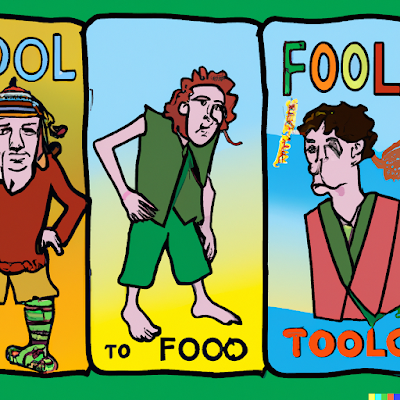Last week: Endings & Epilogues
The first time I tried running an epilogue session along these lines, it was fun, but ramshackle; the second time, I tightened the focus up and was pretty satisfied with the results, although there’s still room for improvement.
Here's how it worked. Shortly after the last conventional session, we gathered to resolve loose threads and collectively explore the characters' epilogues. I used a D&D-themed tarot deck that I had received as a gift for adjudication. Card-based resolution wasn’t inherently important – rolling dice would have achieved the same effect. But I liked that the cards signaled to the players that we were doing something categorically different from an ordinary RPG session. No ability checks nor saving throws were rolled, and no spell slots or X/day powers were referenced during our epilogue session.
Each player took turns describing what happened to their character in one of three time periods; one hour before the events of the final session; one minute after those events; and one year later. We jumped around between these time periods, with the only rule being that no scene could contradict an already-established scene. I would sometimes ask questions, or other players would add some details to the scene. After we had finished describing the scenario, we would flip over a tarot card and interpret the results.
I had narrowed the tarot deck down to the cards numbered 2-7 across the four suits. High results were positive for the PCs, while low results were negative (a 7 was very positive, a 4 mediocre, a 2 very negative). After negative results, I would also shuffle in major tarot cards representing antagonists or unresolved problems; these could then unexpectedly appear in future scenes.
Negative results didn't necessarily mean “something terrible happens.” One negative result, concerning the fate of a group of NPCs, was bittersweet, rather than dark or tragic. Another negative draw for a major antagonist simply meant that creature would remain a threat to the world in the future; something that dovetailed nicely with what one of the players had already established for their character through earlier draws.
It was important for the players to understand that an epilogue minigame changes the normal action resolution loop between players and the DM. I was inviting them to take more narrative control; not just control of their own characters, but of other people, places, and events the epilogue touched on. The players got into the spirit of it pretty quickly, and introduced a whole range of situations and implications that I never would have thought to have planned for if I had run the epilogue session as a conventionally DM-designed scenario.
If I were to run it again, I would probably make the deck a bit smaller – with 28 cards to start with, the major arcana didn’t come up as often as I would have liked. Beyond that, I could imagine running this hack again with few (if any) other tweaks.






